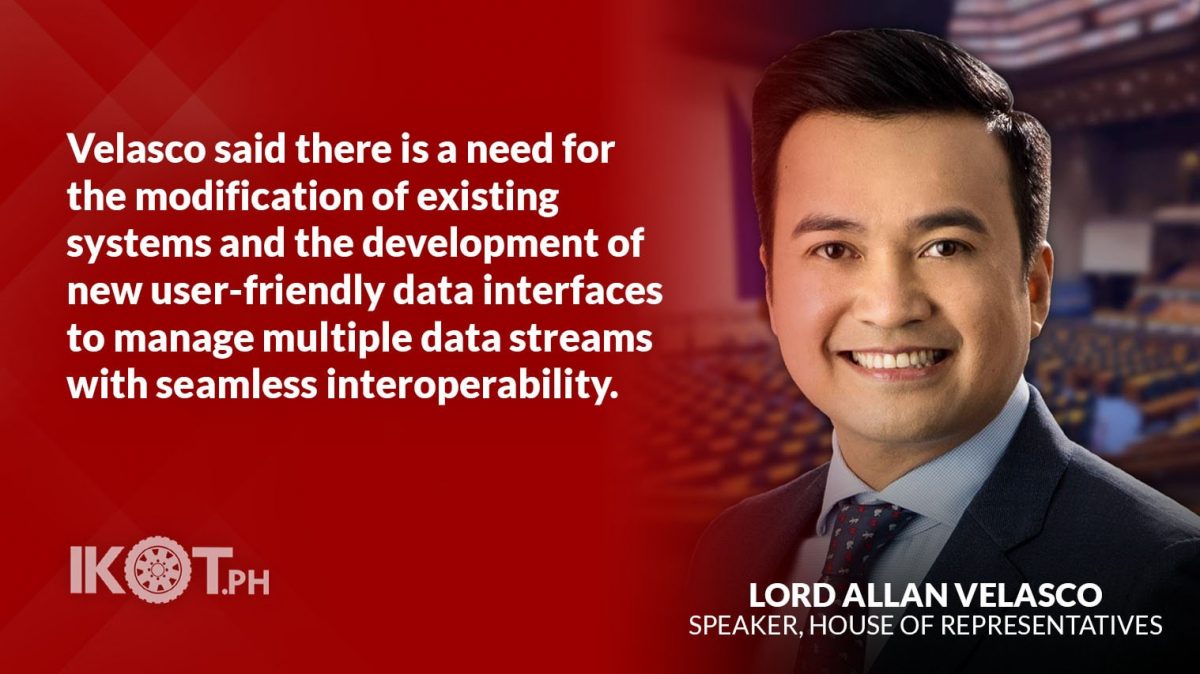Speaker Lord Allan Velasco has filed a resolution urging the COVID-19 Inter-Agency Task Force for the Management of Emerging Infectious Diseases (IATF-EID) to establish a unified national contact tracing protocol to ensure a more effective health emergency data monitoring system in the country.
In House Resolution No. 1536 he filed last week, Velasco underscored the need to strengthen the government’s contact tracing efforts using the most effective and safest system to further boost its response to the COVID-19 pandemic.
Data shows that the Philippines is only able to identify at least seven contacts per coronavirus-infected person when the ideal contact tracing ratio should be 1:37 for urban areas, and 1:30 for rural communities.
“Contact tracing is a public health strategy to dramatically decrease the impact of an epidemic or pandemic that has been used for years to combat communicable diseases such as the Ebola outbreak in 2014, and the severe acute respiratory syndrome (SARS) outbreak in 2003,” Velasco said.
He added: “Contact Tracing is the process of finding out who has recently been in close contact with a person infected with a virus, such as SARS-CoV-2, the virus that causes COVID-19, and reaching out to those people to let them know they may have been exposed and guide them on what to do next, which may include self-isolating to prevent further spread of the virus.”
Data shows that the Philippines is only able to identify at least seven contacts per coronavirus-infected person when the ideal contact tracing ratio should be 1:37 for urban areas, and 1:30 for rural communities.
Velasco said the proposed unified national contact tracing protocol should include the designation of a government agency or body as the centralized repository of information to facilitate a faster health emergency response system.
The protocol, he said, should also include a secure, encrypted transmission of data, a unified data procedure for solution providers; compliance with Republic Act 10173 or the Data Privacy Act of 2012 in the handling of data; and the provision of real-time data access to accredited contact tracing app providers.
During the onset of the pandemic, local government units (LGUs) had a hard time initiating contact tracing in their respective localities because the COVID-19 database lack fundamental data such as phone number and full address.
As a result, numerous third parties offered disparate free contact tracing solutions, usually through mobile apps that require people to own smart phones, while some establishments continued to offer manual registration to non-smart phone users.
“Contact tracing is a public health strategy to dramatically decrease the impact of an epidemic or pandemic.”
In November last year, IATF Resolution No. 85 prescribed the use of StaySafe.PH platform as the official COVID-19 management and monitoring app for government offices and LGUs. However, some sectors, including tourism industry participants, prefer SafePass over StaySafe.PH.
According to Velasco, the disparate apps and non-centralized data repository led to redundant products, cost duplication, and less effective solutions often due to limited data access.
He said the data systems should include automated reports to aid in monitoring progress and outcomes of case investigation and contact tracing.
“It is observed that there is poor interconnection and data sharing between solution providers and the central data base maintained by the Department of Health,” Velasco pointed out.
Moreover, Velasco noted that data sharing agreements between local and national jurisdictions need to be established or augmented to ensure timely and accurate data collection and sharing.
“Some sectors have also expressed concern on unknown and unverified data privacy practices of various solution providers, including non-compliance with the data privacy law,” he pointed out.
Velasco said there is a need for the modification of existing systems and the development of new user-friendly data interfaces to manage multiple data streams with seamless interoperability.

